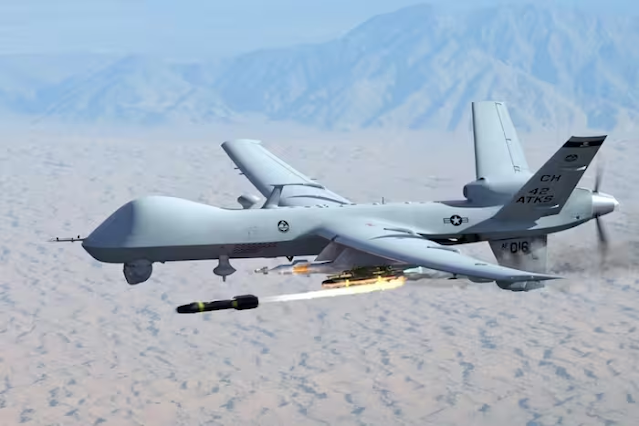India To Receive Most Advanced Weapon Systems From USA Including MQ 9B Drones, Hellfire Missiles
In a significant development solidifying the strategic partnership between the United States and India, the Biden administration on Thursday notified Congress of its intention to sell nearly $4 billion worth of advanced weaponry to India. This landmark deal, dominated by the sale of 31 MQ-9B armed drones, marks a major boost for India's defense capabilities and strengthens its position as a key player in regional security.
5 Key Points about the US-India Drone Deal:
- High-Tech Drones: India to acquire 31 MQ-9B drones, offering advanced intelligence, surveillance, and reconnaissance (ISR) capabilities.
- Multi-Role Deployment: 15 SeaGuardian drones for the Navy focus on maritime patrol and anti-submarine warfare, while 8 SkyGuardian drones each for the Army and Air Force handle land attack and reconnaissance.
- Endurance & Reach: Long-endurance drones capable of flying over 30-40 hours, exceeding the horizon via satellite, and operating in diverse weather conditions.
- Strategic Significance: Deal strengthens US-India ties, bolsters India's defense capabilities, and enhances regional security.
- Economic Impact: General Atomics (US) to be the primary contractor, potentially creating offset agreements and economic opportunities.
Strengthening Strategic Relations and Regional Security:The decision, announced by the Defense Security Cooperation Agency (DSCA), underscores the
growing strategic alliance between the U.S. and India. The DSCA emphasized India's critical role in "political stability, peace, and economic progress in the Indo-Pacific and South Asia region," highlighting its significance as a "major defense partner."
Details of the Arms Deal:
The proposed sale encompasses a range of sophisticated equipment, including:
- 31 MQ-9B Sky Guardian aircraft: These high-altitude, long-endurance drones, equipped with Hellfire missiles, significantly enhance India's surveillance and reconnaissance capabilities, particularly in sea lanes.
- Advanced weaponry: The package includes 170 AGM-114R Hellfire missiles, training missiles, and laser-guided bombs, bolstering India's offensive and defensive capacities.
Benefits for Both Nations:
The DSCA highlighted the proposed sale's alignment with U.S. foreign policy and national security interests. It strengthens the U.S.-India strategic partnership, promotes regional stability, and improves India's ability to address "current and future threats." For India, the acquisition modernizes its military, enhances its defense posture, and signifies its growing stature as a regional power.
Economic and Technical Aspects:
General Atomics Aeronautical Systems, based in California, will be the primary contractor for the deal. Negotiations between the purchaser and the contractor will determine any potential offset agreements. The implementation is expected to have minimal impact on U.S. defense readiness and require no additional U.S. personnel deployment in India.
Significance and Potential Impact:
This landmark arms deal signifies a deepening strategic partnership between the U.S. and India, with ramifications for the Indo-Pacific region. It equips India with advanced technology to counter regional security challenges and reinforces its strategic importance to the U.S. The deal is likely to be closely monitored by other regional players, potentially influencing the geopolitical landscape in the Indo-Pacific.



Comments